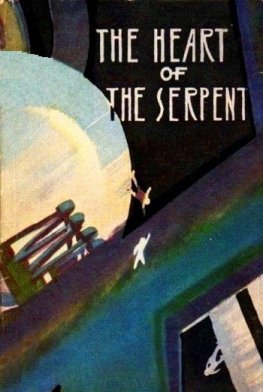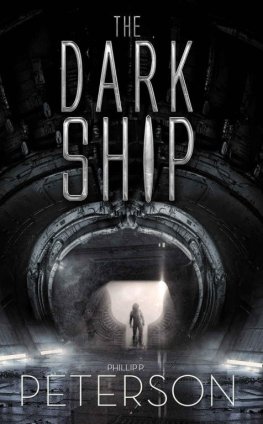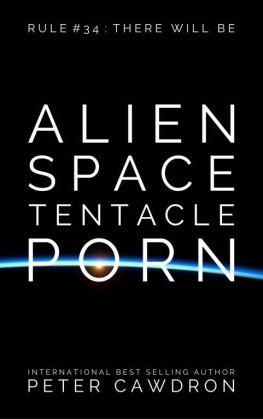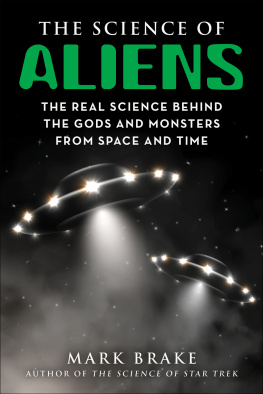Ivan Yefremov
The Heart of the Serpent
Original title Russian: , Latin: Cor Serpentis
Translator Roza Prokofieva
Foreign Languages Publishing House (Moscow) 1961
Music broke through the mists of oblivion. Awake, ye, yield not to sinister entropy The words of the familiar song stirred memories and started off an endless chain of accustomed associations.
Life returned to the great ship. It still trembled, but the automatic devices went on with their work. The whirls of energy that had enveloped the three beehive-shaped green metal domes in the control room had died down. In a few seconds the domes leapt up and disappeared in niches overhead among a maze of pipes, trusses and wires, revealing three men reclining in deep padded seats.
Two of the men remained motionless, but the third stirred, opened his heavy-lidded eyes and tossed back a mane of dark hair. He raised himself up from the depths of the soft insulation, and leaned forward to read the multitude of dials on the slanting illuminated surface of the main instrument panel that stretched across the compartment half a metre in front of the three seats.
So were out of the warp, he heard a strong voice say next to him. I see you are again the first to awake, Kari. You really have the ideal constitution for an astronaut!
Kari Ram, electronics engineer and astronavigator of the space ship Tellur, turned sharply to meet the still clouded gaze of the ships captain, Moot Ang.
The captain shifted his position with an effort, sighed with relief and turned his attention to the panel.
Twenty-four parsecs Weve passed right by a tar. New instruments are always inaccurate or perhaps I should say we havent learned to use them properly yet. You can cut off the music Teys awake.
In the silence that fell Kari Ram could distinctly hear the uneven breathing of the man who had just regained consciousness.
The main control room was a good-sized circular chamber safely hidden deep in the bowels of the space ship. Above the instrument panels and hermetically sealed doors a bluish screen ran all round the wall. Forward, along the ships longitudinal axis, there was a gap in the screen for the locator disc, almost twice the height of man in diameter. Transparent as crystal, the disc seemed to merge with cosmic space, sparkling like a black diamond in the light from the instrument dials.
Moot Ang made an almost imperceptible movement and all three at once threw up their arms to shield their eyes. A gigantic orange sun had burst out on the port side of the screen. Although its intensity was reduced by powerful filters, the light was all but unbearable.
Moot Ang shook his head.
We nearly went through the corona. No more exact courses laid out in advance for me! Its much safer to by-pass.
The worst thing about these warp ships is that you lay the course and then shoot off blindly like a bullet fired into the night, Tey Erons voice came from the depths of his seat. Tey was second in command and the head astrophysicist. Besides, we too are blind and helpless cooped up inside the vortical protective fields. I dont like this kind of cosmic flight, even though its the fastest way man has been able to devise.
Twenty-four parsecs, yet to us it has seemed like an instant, Moot Ang said.
An instant of death-like sleep, Tey Eron muttered gruffly. As for the Earth
Its best not to think about the Earth, Kari Ram said, getting up. Or the fact that seventy-eight years have passed down there since we took off, or of the friends and folks at home whove died of old age, or the other changes. What will it be like when we get back I wonder?
It would be the same no matter what type of space ship you use, the captain said calmly. The only difference is that in the Tellur time moves faster for us. Although were going farther out into space than anybody before us, well be little changed when we return.
Tey Eron went over to the computer.
Everythings normal, he said a few minutes later. Thats Cor Serpentis over there, or as the ancient Arab astronomers called it, Unuk al-Hay the Heart of the Serpent.
Where is its neighbour? Kari Ram asked.
Behind the main star. Look here: spectrum K0. Its eclipsed for us.
Strip all receptors! ordered the captain.
The infinite blackness of the Cosmos enveloped everything a bottomless blackness that seemed blacker still for the golden-orange blaze of Cor Serpentis port and aft. The Milky Way and other stars paled in the glare. Only one white star down below held its own.
Were nearing Epsilon Serpentis, Kari Ram said. His voice was louder than necessary; he evidently expected a compliment from the captain. But Moot Ang said nothing. His eyes were turned to starboard, to the bright white blaze of the distant star.
Thats where my old ship, the Sun, went, he said at last, conscious of the expectant silence in the control room. To explore new planets
So thats Alphecca of the Corona Borealis!
Yes, Ram. Or to use its European name Gemma. But its time to get to work.
Shall I wake the others? Tey Eron asked.
No. Well make one or two warps if its all clear ahead, Moot Ang said. Switch on the optical and radio telescopes. Check the tuning of the memory machines. Tey, start the nuclear engines. Well use them for the time being. Accelerate.
Six-sevenths of the speed of light?
The captain nodded and Tey quickly flipped over switches. Not a tremor passed through the space ship, only a blinding blaze lit up all the screens and completely blotted out the faint stars our own Sun among them of the Milky Way below.
We have several hours to wait before the instruments complete the observations and check them over, Moot Ang said. Well eat now and then we had all better get some sleep. You carry on, Kari. Ill relieve you.
Kari Ram dropped into the swivel seat facing the centre of the control panel. When the two other men had gone, he switched off the stern receptors and the flames of the rocket engines disappeared from view.
The reflected glare of fiery Cor Serpentis danced on the gleaming surface of the instruments. The disc of the forward locator remained a black bottomless well. This was reassuring, for it showed that the calculations which had taken six years of work by the finest minds and computing machines on Earth were correct.
The Tellur, the first space-warp ship ever made on Earth, was moving down a great corridor in space devoid of stellar clusters and dark clouds. This type of ship, capable of moving in zero-space, was designed to reach much farther out into the Universe than the previous anameson nuclear-rocket ships which could not exceed five-sixths or six-sevenths of the speed of light. Operating on the principle of compression of time, warp ships were thousands of times faster. Their drawback was that during each lunge forward they were out of human control; as a matter of fact, astronauts could endure the moment of space warp only in an unconscious state, protected by a powerful vortical energy field. The Tellur moved in spurts, and before each spurt care had to be taken to see that the way ahead was clear.
Now the Tellur was on its way past the Serpent and through practically starless space in the high latitudes of the Galaxy to a carbon star in Hercules. The object of this incredibly distant journey was to study the still mysterious processes of transformation of matter directly on the carbon star. The findings would be of inestimable value to power development on Earth. There was a theory that the star itself had some connection with a disc-shaped electromagnetic dark cloud revolving edgewise to the Earth. Scientists thought the processes going on here in relative proximity to the Sun might be a repetition of the birth of our own planetary system, the relative proximity in this case meaning one hundred and ten parsecs, or three hundred and fifty light years.










